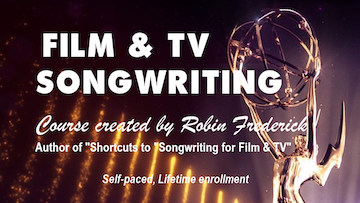WHY THIS SONG
Justin Bieber’s “Ghost” is a Pop hit with a strong, emotionally moving singer-songwriter vibe. It’s the sixth single off Bieber’s album “Justice,” and it’s charting in the top 10 globally.
An artist can no longer release a ten-song album with one, maybe two strong songs. “Justice” has 16 songs and, so far, six of them have been hits. Established artists need songs that sound like potential hits and if you’re an artist who wants to work at this level, you need them, too. So, let’s take a look at what makes this one so appealing.
SONG GUIDE
“Ghost” – Justin Bieber
Songwriters: Jonathan David Bellion / Jordan Kendall Johnson / Justin Bieber / Michael Ross Pollack / Stefan Adam Johnson
TECHNIQUES TO HEAR AND TRY:
• Write a short song (under 3 min.).
• Maintain a tight lyric focus.
• Play with note rhythm patterns.
Listen to the song. Read the lyrics.
Watch the lyric video on YouTube.
Read the lyric here.
GENRE/STYLE: (Pop)
(What is a genre? Watch this video.)
You’ll find plenty of Pop elements in the production of “Ghost,” but the lyric heads off into a more personally revealing style that leans toward Singer-Songwriter. The lyric sounds very vulnerable, more emotionally present than the usual rhythmical lyrics of Pop. (Think Dua Lipa and Katy Perry.) This blend leans more toward artists like Shawn Mendes, Selena Gomez, and Alec Benjamin.
Even though this song is a huge radio hit, it could also work for film and television. Bieber has said in interviews that the song is about separation, specifically the loss of connection during the coronavirus epidemic. Yet he never mentions the virus, or quarantine, or anything that might tie it to a specific event or time. The song focuses instead on grief and loss, two emotions that are a staple of dramatic films and television series.
TIP: If you’re writing about a specific event but still want a song that will work for the Film & TV market, focus on the emotion underlying the situation, not the specific story of what happened.

SONG STRUCTURE
At 2 minutes and 33 seconds, “Ghost” is a surprisingly short song considering the depth of emotion it expresses. The structure is pared down to the basics, but still manages to move the listener.
Here’s how I hear this song’s structure…
VERSE 1 / PRE-CHORUS / CHORUS
VERSE 2 / PRE-CHORUS / CHORUS
POST-CHORUS
CHORUS
The opening line of each section…
VERSE 1 & VERSE 2: “Youngblood thinks there’s always tomorrow”
PRE-CHORUS 1 & 2: “Since the love that you left…”
CHORUS: “If I can’t be close to you…”
SONG LENGTH: As you can see from the opening lines of this song, there’s a lot of lyric repetition. A short length—just two and a half minutes—might be a viable choice with a song this focused. Hit radio has seen a trend toward shorter songs over the previous few years. Still, there are more radio hits at the 3:00 tor 3:30 length than short ones, so don’t chop down your songs unless you feel that a short length is appropriate.
THE PRE-CHORUS (at :31 and 1:22) This is a short pre-chorus but it’s still very effective.
Since the love that you left / is all the I get
I want you to know…
You can think of a short pre-chorus like this as a kick-off line: a single line or short series of phrases that rapidly step up the intensity of the song, launching the listener into the next section. In this case, two short repeated melody phrases (“love that you left” “is all that I get”) are followed by a rising melody that flows right into the chorus.
Find out more about “kickoff” lines.
THE POST-CHORUS (at 1:54): After the second chorus, the song features an instrumental section where a bridge would normally be. The producers take a few bars to show off their chops and add a short vocal from the end of the chorus. This is typical of a post-chorus section, and it’s enough to give the listener a break before the song releases into the final chorus.
A REALLY ABRUPT ENDING: The ending of this song is so abrupt it almost sounds like a mistake. Since the song is about someone who is gone, it’s possible that the ending is supposed to suggest that the person’s life or the relationship with the singer was cut short. If that’s the case, it feels a little gimmicky and not worthy of the strong, authentic emotion embodied in the melody and lyric. Listen and see what you think.
LYRICS
GIVE YOUR SONG A SINGLE, EMOTIONAL FOCUS
“Ghost” is about dealing with the loss of a loved one. Whether that’s someone who died or the end of a relationship is not clear in the lyric, but the emotion—the feeling of loss and grief—is. The lyric has to communicate that emotion to listeners so they can relate to the singer and engage with the song.
At the heart of the lyric is a powerful statement: I miss you more than life. Will listeners believe the singer? Or will they think he’s exaggerating or just repeating a cliché? In order to convince them, everything in the song must lead to and support that statement.
- We hear how the singer is affected by it: I miss your touch on nights when I’m hollow
- We learn the strength of the singer’s feelings: Your memory is ecstasy
- We learn what the singer is willing do for it: I’ll settle for the ghost of you
When every line supports the emotion at the heart of the song, then listeners are more likely to believe that the singer really means what he or she is saying. A single-minded focus like this gives the singer credibility and encourages the listener to trust them. The experience feels real.
USE WORDS WITH ASSOCIATIONS
Right off the top, I love the way the lyric uses the word “youngblood” to refer to youth. The songwriters could have said “a young man” or “a young girl.” But “youngblood” comes with associations. It’s a person with a certain swagger or bravado, a belief in their own invulnerability, full of the confidence that comes from innocence.
In contrast, the singer has learned that there isn’t always a tomorrow, things don’t always last. He sounds world-weary, more mature, having experienced loss and sorrow. It’s an effective way to show us the singer’s character and help us relate to him.
– Try It Now –
Take a look at another song about loss: “Before You Go” by Lewis Capaldi. How does the lyric communicate the emotion at the heart of that song? What are the differences? Read my Song Guide on “Before You Go” for ideas.


MELODY
PLAY WITH NOTE RHYTHM PATTERNS
Like most verse melodies, this one starts in the lower note range of the song so there’s plenty of room to rise to the high notes of the chorus. The verse melody feels natural and conversational, but it also manages to catch the listener’s interest. The first two lines start with four notes that are evenly spaced then add a little syncopated twist at the end of the line.
Evenly spaced: Young-blood-thinks-there’s
Syncopated: al-ways to-mor-row
The third line of the verse (“I know you crossed a bridge that I can’t follow”) reverses the rhythmic twist, putting the syncopation at the beginning of the line. Verse melodies don’t have to be boring or familiar-sounding. Play with the rhythm of the notes to keep them fresh.
-Try It Now-
Listen to the verse melody and see if you can hear the evenly spaced and syncopated notes.
REPETITION IN THE CHORUS MELODY OF “GHOST”
Overall there’s not as much obvious repetition in this chorus melody as there is in many of today’s Pop hits. Instead, the songwriters created a flowing, three-line melody which is then repeated, note for note in the second half of the chorus.
TIP: Even when writing a melody that feels free-flowing, you still need to have enough repetition to give the listener a sense of structure. There’s a difference between “free flowing” and “wandering off.”
CHORDS
“Ghost” uses the same repeating, four-chord progression in both the verse and chorus. But the songwriters opted to add two new chords—where else?—in that short section that launches the chorus, creating contrast and grabbing attention.
VERSE: | Bm | G | D | A |
PRE-CHO: | Em F#m | G | G Bm | A |
CHORUS: | Bm | G | D | A |
See the chords with lyrics here.
COLLABORATION TIP
In the case of “Ghost” there are five songwriters listed. Three of them are producers, Bieber is the fourth, and the fifth is Michael Pollack, a songwriter with an extensive string of hits to his name. Working with cowriters who have a professional attitude and a good work ethic will help an artist create the large number of songs they need for today’s demanding listeners.
Notice that despite the string of cowriters, this song still feels personal and authentic. When artists and cowriters work together, the artist must convey their vision of the song and the emotion they want to express. It’s the cowriters’ job to support that.

